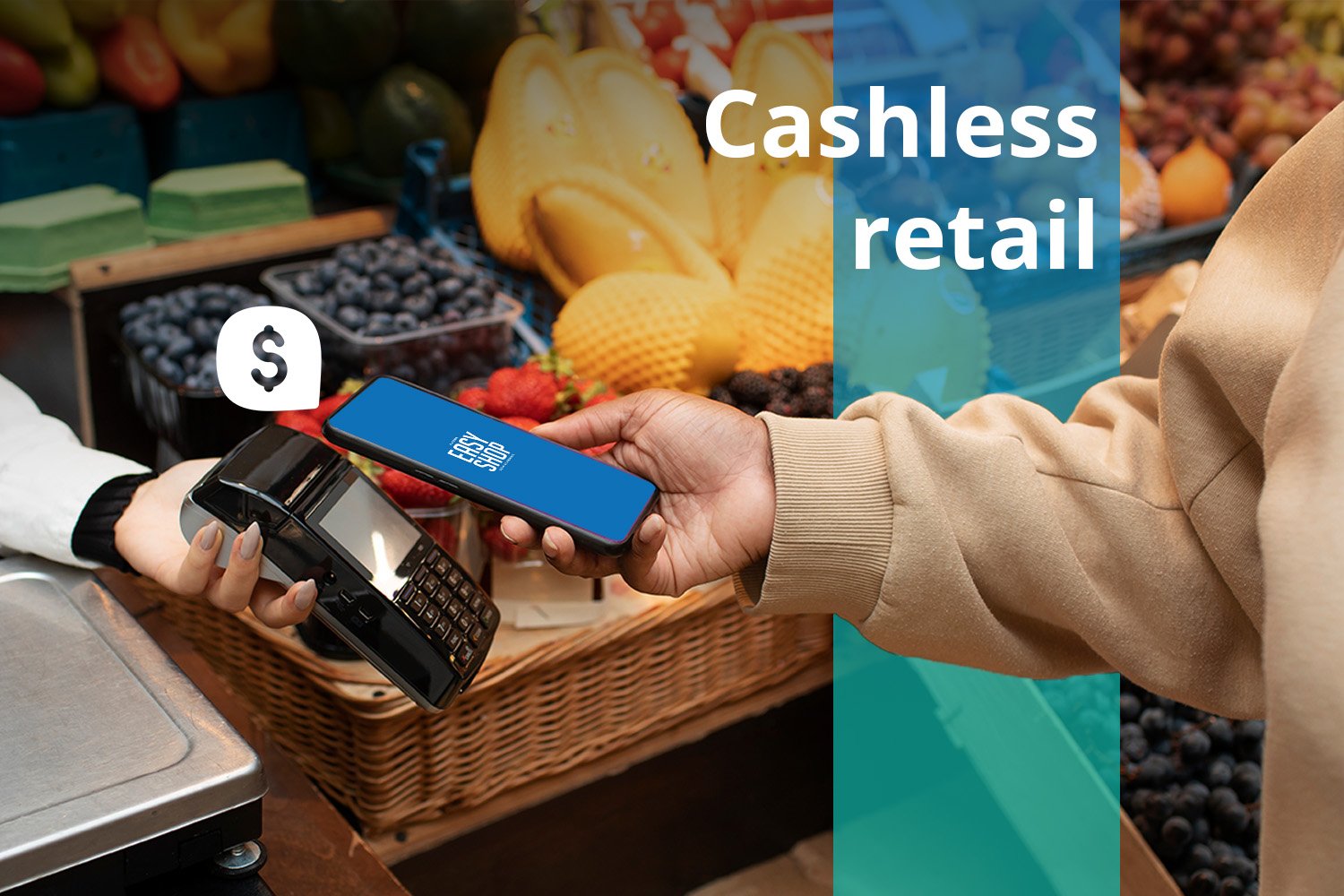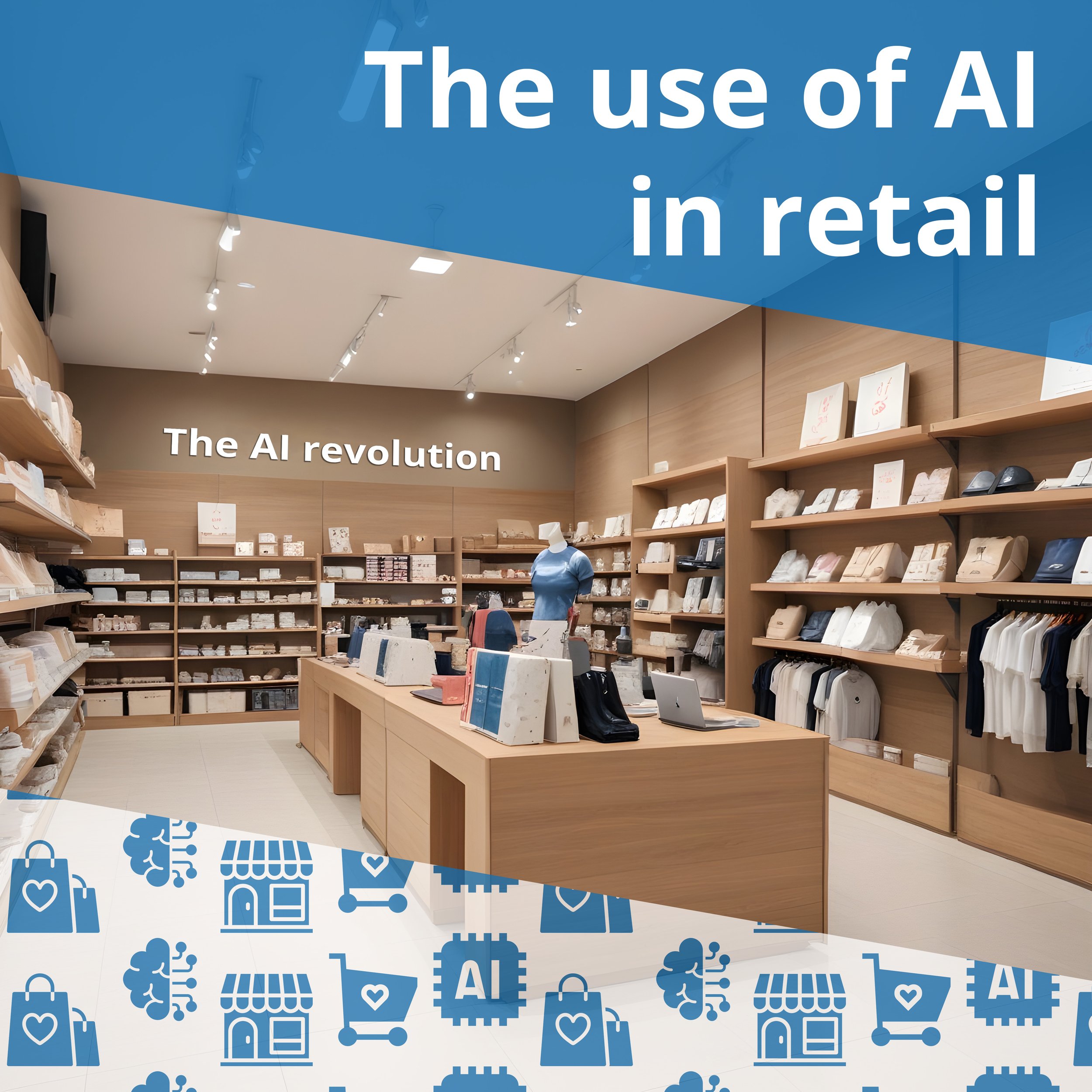From Shelves to Checkouts: Exploring AI's Role in Grocery Stores
With the rise of AI, retailers have begun to see the opportunity to enhance several aspects of their businesses, from day-to-day activities to more fundamental changes in routines and processes of the organisation. Also grocery retailers have noticed these opportunities, but many are cautious about the many AI-solutions offered on the market. Where to begin, and how? Learn more about the use of AI in grocery stores here!
The meaning of AI
Most people have heard of artificial intelligence (AI) by now, yet there are various definitions that explains what this type of technology means. According to Accenture, AI can be defined as “…a constellation of many different technologies working together to enable machines to sense, comprehend, act, and learn with human-like levels of intelligence.” The technology creates unique opportunities as it differs from both machine learning and deep learning - AI has the ability to carry out tasks that typically requires human intelligence.
AI is more than just a buzzword, as more and more companies are starting to see the potential benefits from implementing one or several AI-powered solutions. Grocery retailers are no exception, and while they may face challenges that differs from other retailers, there can still be a lot to gain from implementing a suitable AI solution.
But not everything about AI sparks joy – as the technology increases in popularity, there are also raised concerns about matters such as data safety, copyright infringement and the climate aspect of having an increasing number of server farms to power the AI engine. Nevertheless, it is worth diving into the possibilities with AI, as long as one is aware of the potential risks.
How can AI be used by grocery retailers?
As AI is a multi-faceted technology, there is not a clear-cut solution that will appeal to every grocery store, nor are there any limits to how much the technology should be utilised. Here are some examples of how grocery stores can utilise AI-powered solutions:
AI for automated checkout systems
AI-powered automated checkout systems could be utilised to reduce the need for traditional cashiers, making shopping faster and more convenient.
Amazon Go stores exemplified this innovation with their "Just Walk Out" technology, where AI and computer vision automatically detect items taken from shelves and charge customers as they leave the store. The idea behind this solution was to reduce wait times and to streamline the checkout process. Unfortunately the technology proved to be expensive and somewhat ineffective, as it was revealed that the ai-powered solution also got help from 1000 human employees in order to reach sufficient accuracy.
Inventory and supply chain management
AI can be used to enhance inventory and supply chain management by predicting demand, optimizing stock levels, and reducing waste. Kroger, for instance, uses AI to forecast demand for perishable items, ensuring that products are available when customers need them while minimizing spoilage. This predictive capability helps grocery stores maintain optimal stock levels and reduce costs associated with overstocking or understocking.
A personalized shopping experience
As mentioned, data is a big part of a successful AI solution: the system needs to learn and draw conclusions from the data, in order to be useful. Once this has occurred, it can be of great service, for example when providing a personalized shopping experience. But how does this work? AI algorithms analyze customer data to offer personalized product recommendations and promotions!
This type of AI-powered solution has been used online with great success, but is also possible for physical stores. Grocery chains like Tesco and Walmart leverage AI to provide tailored suggestions based on past purchases and browsing behavior, enhancing customer satisfaction and loyalty. Personalized discounts and offers are also delivered through mobile apps, encouraging repeat business and increasing sales.
The implementation of smart shelves
The idea behind smart shelves is to equip these with AI and IoT (Internet of Things) sensors to track inventory levels in real-time and alert staff when restocking is needed. These shelves could also display dynamic pricing and promotional offers.
The smart shelves also say something about consumer behaviour – and when consumers put items back on the shelf. This provides additional insights regarding product interest, price sensitivity and product placement.
Carrefour, a leading grocery retailer, uses smart shelf technology to ensure shelves are always stocked and to provide customers with up-to-date product information and pricing.
There are however challenges to be solved in connection with smart shelves – what if a customer picks an item from the shelf and replace it with something else? Instance such as these could easily create both confusion and incorrect data for the retailer. A way to overcome this challenge is to install cameras to verify the correct items, however this adds significant costs to an already costly retail tech investment.
Customer service by AI
Customer service can be enhanced using AI – in various ways. For example, physical AI-powered can assist customers in finding products and provide information about promotions and store layouts. These robots, deployed by grocery chains like Ahold Delhaize, enhance the shopping experience by guiding customers through the store and answering their questions. This does not only have the potential to improve customer service, but it also frees up human staff to focus on more complex tasks.
There are however different preferences regarding this type of assistance – some studies shows that customers prefer human interactions when in need of help. Therefore, retailers must be mindful when implementing these type of customer service initiatives – there has to be a balance between human touch and high-tech for maximal customer satisfaction.
AI-solutions for fraud prevention and minimal shrinkage
One of the more recurring issues among retailers is cyber threats, but also the increased shrinkage that occur as self-service solutions are becoming more popular. Can AI be used to address these topics, and even prevent them? The answer is yes! AI can help grocery stores enhance security by monitoring transactions and preventing fraud. AI systems analyze patterns to detect unusual activities and flag potential security issues. Retailers like Albertsons use AI for robust fraud detection, ensuring the safety and security of both customers and the store.
For shrinkage, AI can be used to detect any anomalies in the shopping behaviour of individuals, and use historic data to draw conclusions about what risks there are. Moreover, inventions such as ai-powered scales can ensure that the correct product is being registered – whether the mistake is honest or not.
Demand forecasting and dynamic pricing
Naturally, AI also has a place in demand forecasting and dynamic pricing. By utilising AI tools, the technology can help grocery stores adjust prices based on real-time data. This ensures competitive pricing and maximizes revenue. Aldi uses AI to monitor market conditions and adjust prices accordingly, offering customers the best prices while maintaining profitability.
Using AI this way is a great way to overcome complexity and to draw conclusions based on extensive amounts of data – incorporating a wide range of strategic factors.
The number of AI-powered solutions available on the market is constantly growing, and grocery retailers might struggle when deciding which – if any – solution to implement. It is thereby important to review the business objectives, and to pin-point the most urgent pain-points and priorities. For some, AI might not be on the top of the list of priorities, for good reasons.
Moreover, an understanding of the shoppers’ preferences and consumer behaviour is vital – there is not a one-fits-all solution.
“AI is a great source of technology to enhance selected parts of the business, also for grocery stores. Also, by combining the AI-solution with already existing retail technology, one can gain synergy effects that will elevate the customer experience greatly.”, says Fredrik Englund, Managing Director at Datema Retail.



